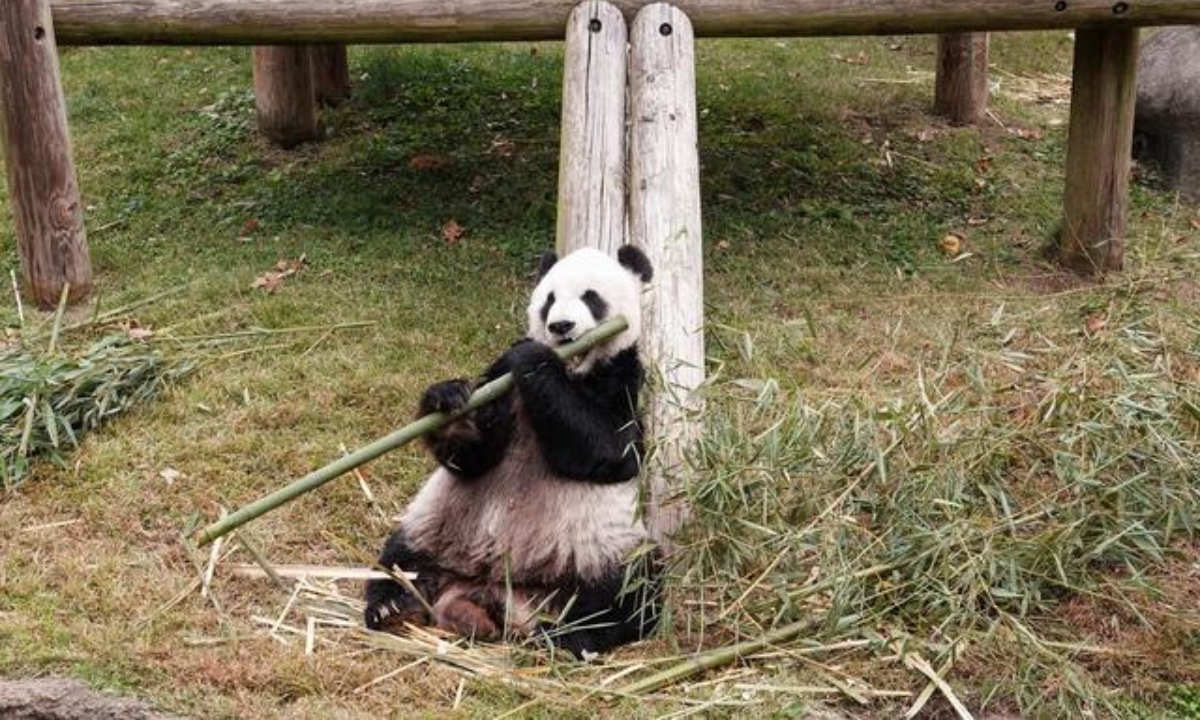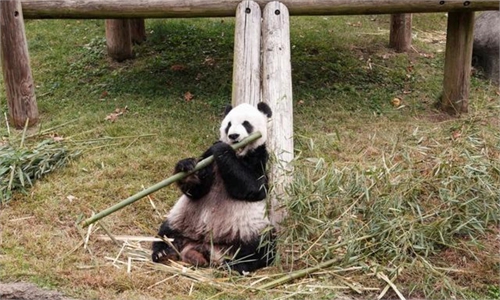
Giant panda Le Le Photo: Xinhua
The Chinese Association of Zoological Gardens (CAZG) extended deep sorrow and regret for the passing of the 25-year-old male giant panda Le Le at the Memphis Zoo in Tennessee, the US on Wednesday, noting that an expert team will be sent to the US to investigate the cause of the panda's death.
The related Chinese department is very concerned about the sudden death of the giant panda and has informed the US side to preserve its body properly. A team of Chinese experts will be set up in a timely manner to go to the US zoo to investigate the panda's death together with their US counterparts, the association said in a statement released last Thursday.
The Chinese Embassy in the US said it will assist relevant parties in handling the aftermath.
The panda died peacefully early last Wednesday in his sleep at the US facility and the cause of death was not yet known due to uncompleted post-mortem examinations, said Memphis Zoo chief executive officer Matt Thompson at a news conference on Friday local time.
Thompson described Le Le's death as "sudden and unexpected" and said that video footage from the days leading up to his death showed no indication that he was sick.
The death comes months before Le Le and female panda, Ya Ya, are set to be returned to China as the Memphis Zoo's giant panda loan agreement with the CAZG will come to an end in April. The CAZG was the first to be informed of Le Le's death, Thompson noted, adding that the Memphis Zoo hopes to receive a younger pair of pandas.
The CAZG and the Memphis Zoo launched the giant panda conservation and research project in 2003, with an agreement duration of 10 years, which was extended by 10 more years in 2013. The pair of pandas arrived at the zoo in April 2003.
In January this year, the two sides discussed the early return of the two pandas to China due to their rising ages and Ya Ya's skin disease, which made her unsuitable to be exhibited any longer.
Although the panda is now elderly, it is still very probable for pandas in captivity to live longer and more healthily, Zhao Songsheng, manager of YueWeiLai, a Chengdu-based NGO dedicated to protecting giant pandas, told the Global Times on Sunday.
Zhao suggested a thorough investigation be conducted into the unexpected death of the panda to prevent the politicization of the event due to changes in China-US relations.
According to Zhao, the two pandas had been previously exposed by netizens as being improperly fed at the zoo, with stale and insufficient bamboo. The extremely emaciated images of this pair of pandas, which were circulated on the internet over the past few years, also indicated something went wrong.
However, the CAZG responded this January to public concerns over panda Ya Ya's physical condition after it organized multiple health assessments of the panda.
A comprehensive judgment made by experts from several Chinese panda protection and research institutions and zoos from both China and the US based on videos, monthly health reports, annual physical examinations and other information showed that Ya Ya had no organic disease and was in medium health. The experts also decided the panda at the zoo had received good care and there was no sign of mistreatment.
The Chinese Embassy in the US inspected the zoo and confirmed the attentive care the pandas received at the zoo.
Many US residents expressed deep sadness toward the death of the giant panda after the zoo mourned its death on social media.
"My daughter was born just a year before Le Le. We live near Memphis and have always taken our kids to see the pandas their whole childhoods. This is so heartbreaking. Rest in peace, sweet Le Le. Thank you for bringing our family joy with all visits to Memphis," a US netizen said.
Another netizen said that the death of Le Le broke her heart since watching Le Le and Ya Ya on the panda cam had been one of her daily doses of joy.
According to Zhao, biodiversity conservation has become a global consensus and the protection of the flagship species of giant pandas for biodiversity conservation is also meant to protect the thousands of species of plants and animals in pandas' habitat.

